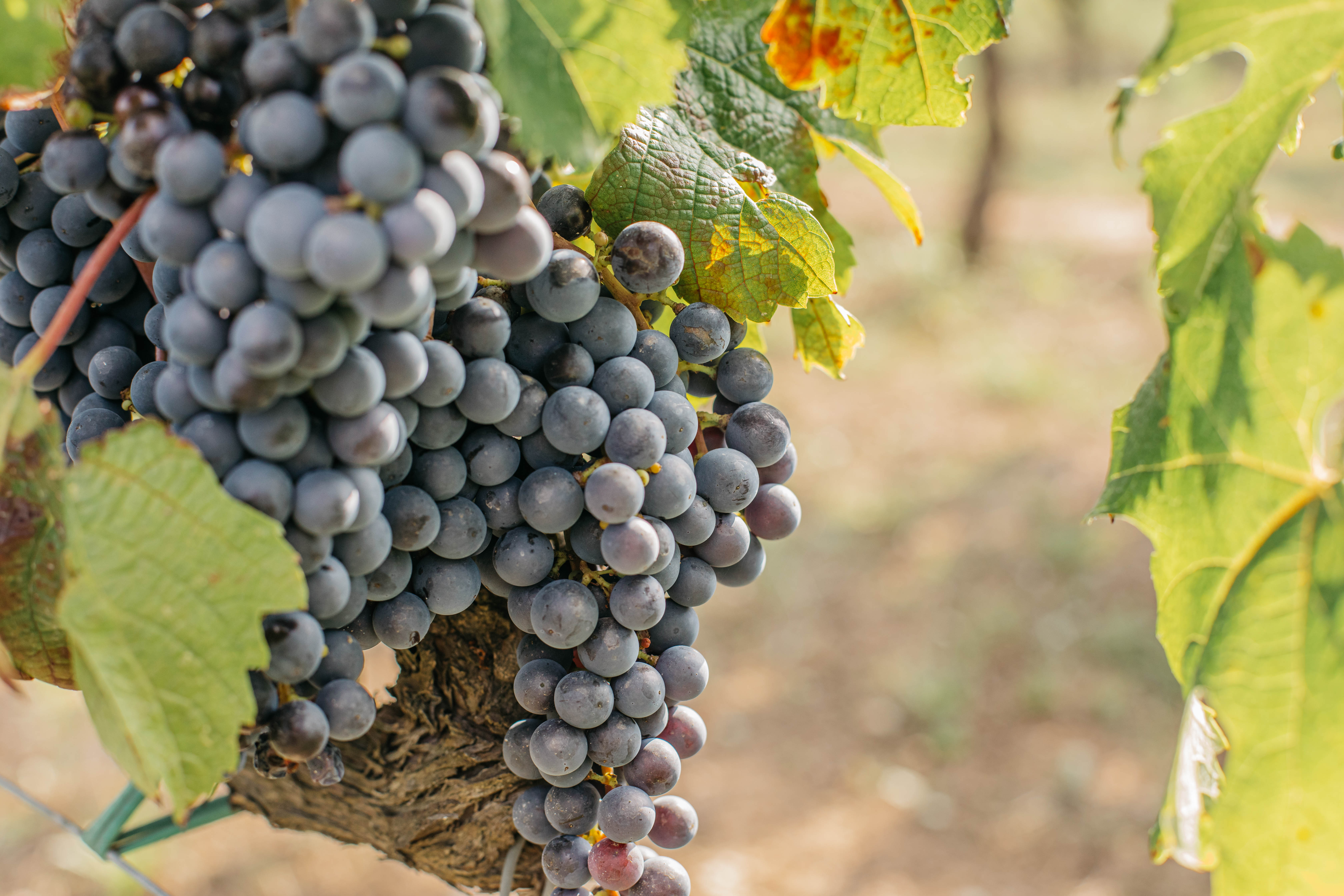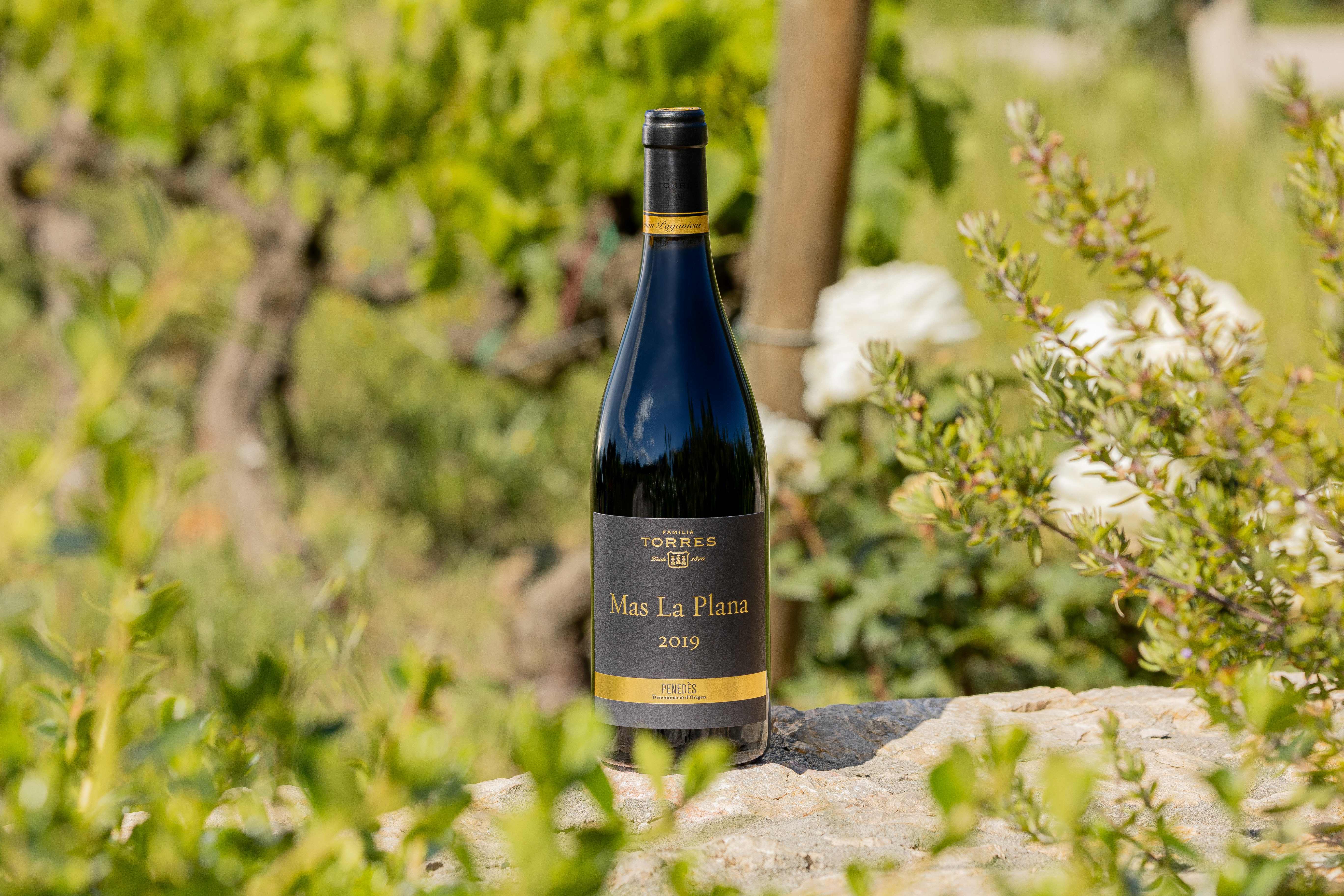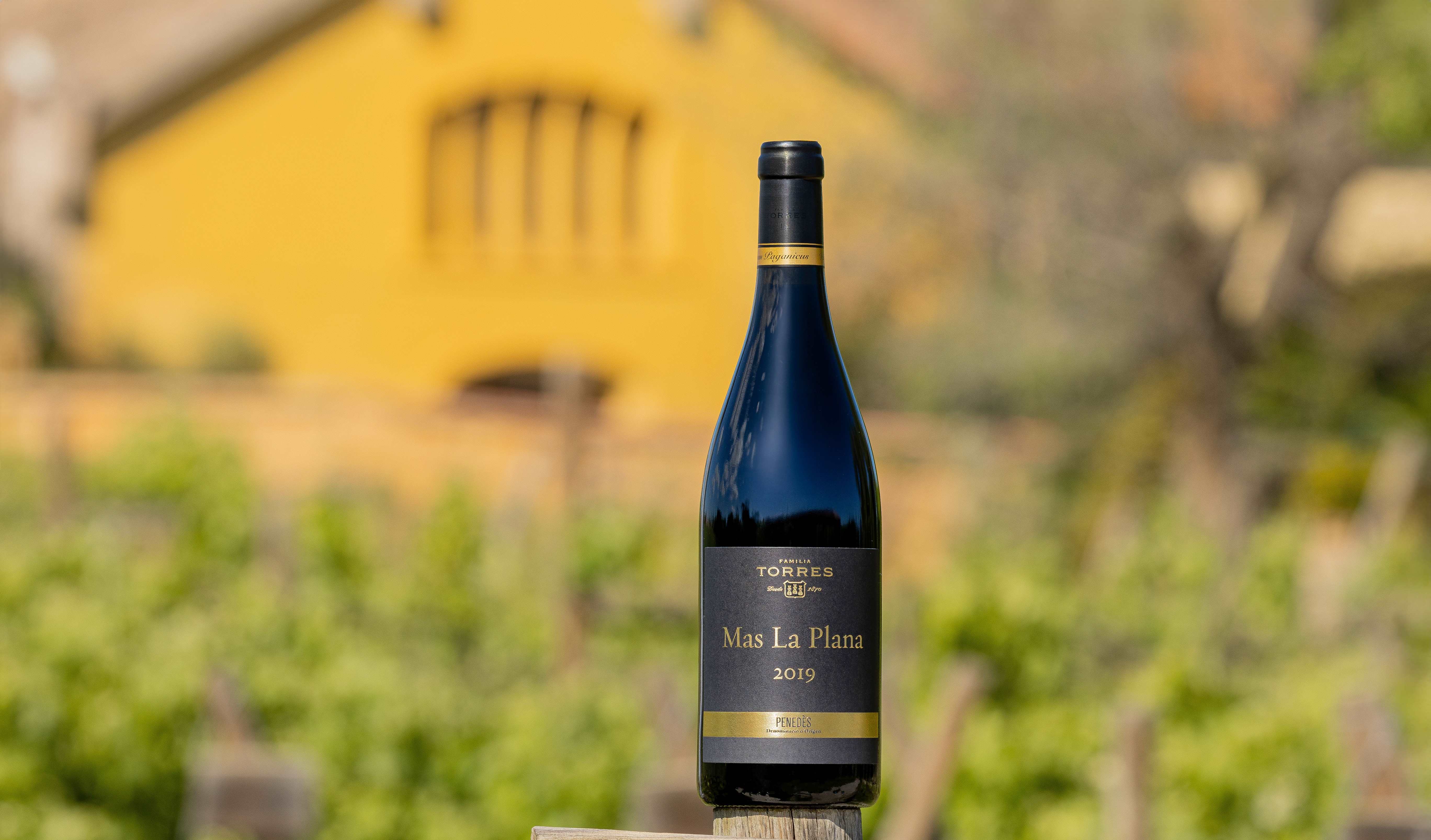CABERNET SAUVIGNON SPECIAL

The soul of Mas La Plana
Cabernet Sauvignon enjoys a reputation that outshines the potential of other red grape varieties. It is no coincidence that the main varietals of the wine world partake in its essence and personality to create their best labels. This is one of the varieties with the greatest capacity to adapt to different soils and climates.

Cabernet Sauvignon vine in the DO Penedès; a Familia Torres property
It is a variety with universal appeal that reverberates in the echoes of history, when it was known as Biturica. But beyond the romanticism and the history, already well-established in the collective unconscious of the wine world, the reasons why Cabernet Sauvignon can assert itself are founded on solid arguments:
Adaptation, the key to success
-
Its physiology is, perhaps, the key to its success in adapting to different climates and geographic contexts: budding late, it avoids the spring frosts feared by vine growers.
-
The thick-skinned berries, with a high skin-to-pulp ratio, are resistant to both rot and insects.
-
Thus, the variety has spread from old Europe to extend its influence throughout the Americas, South Africa, and Oceania, emerging with different organoleptic accents, although the varietal paradigm coincides in low yields and tannic wines with an elegant, upright, chiselled body and high acidity. Wines that embrace the ageing in oak and the solitude of the complex reduction in the bottle.
The flavours of Cabernet
- Nonetheless, there are certain distinctive flavours shared by all the profiles of this variety, which vary subtly depending on the climatic characteristics and rigours:
The classic Cabernet flavours revolve around a layer of fresh blackcurrant (temperate climates) turning into cherry and currant jam (warm climates). In cooler regions, the currant notes are counterbalanced with a green aspect that recalls bell pepper, mint, and cedar, eucalyptus and menthol.
- Cabernet Sauvignon comes together with oak to show us its best and most complex side. Likewise, slow ageing in the bottle will accentuate the structural magnificence, without excesses, elegant and aromatic tannins, and a distinctive classic elegance.

Cabernet Sauvignon grapes in the DO Penedès; a Familia Torres property
Mas La Plana: the wine that changed everything
- There is a lot of literature about the history of Mas la Plana. Nevertheless, we must bear in mind and remember the main factors that make this icon a wine that goes beyond the wine itself.
- Miguel A. Torres’s breakthrough in the wine scene, first in Spain and then internationally, was a step forward in the perception of high-quality wines from Spain, modernizing winemaking techniques and increasing the diversity of Penedès vineyards with the introduction of new varieties.
Miguel A. Torres made a bold wine that broke with the winemaking tradition of the time, bringing to life the fruit of the Cabernet Sauvignon vines grown in 1966 on the estate of the same name.
- Today, Mas la Plana; the estate, its parcels, and the wine are inheritors of the best winemaking tradition, the result of experimentation and experience. A thorough understanding of the variety allows us to appreciate the subtle differences between adjacent parcels, giving each vintage a unique identity.
In 1979, at the Paris Wine Olympics organized by the leading specialist magazine Gault-Millau, the first vintage of Mas La Plana, (1970) triumphed over the world’s most acclaimed and distinguished Cabernets, once the preserve of the great French chateaux.

Mas La Plana is a wine made from Cabernet Sauvignon in the DO Penedès appellation
Mas La Plana: facts and flavours
- 29 hectares that enjoy a Mediterranean climate and were already producing wine in Roman and medieval times are today home to Cabernet Sauvignon vines that are 30 years old on average and grow in soils of Quaternary origin, formed by calcareous silt on fluvial terraces and gravel.
- In these conditions, the vines are grown in rows positioned in such a way that the hours of sunlight reach the plant evenly. Moreover, the planting density is high, meaning the vines compete for water and nutrients, leading to a decreased production characterized by smaller, more concentrated berries.
- The experience accumulated has therefore allowed the estate and its winery to be a pioneer and a benchmark in production methods that have been exported with great success in the industry:
- Limited, high-quality production
- Ecological awareness towards the land
- Parcelling of the land
- Appropriate clonal selection
- The soul of a land rests in the bottle until it is uncorked. The expression and structure reveal its origin, unmistakable in the quality and richness of its fleshy, fruity tannins and identifiable in the intense varietal notes from the estate’s microclimate.

Mas La Plana, from the DO Penedès appellation, is made from the Cabernet Sauvignon variety
Mas La Plana boasts a velvety palate, with warm, enticing tannins that seem to act as a bridge between the ripe black fruit, the spices from the oak, and a final embrace of liquorice and truffle that is captivating and seductive.
Mas La Plana Mas La Plana marked a paradigm shift and the end of the isolation of Spanish wines on the international market. Maybe not enough time has passed since this turning point for us to become fully aware of the significance of this emblematic wine creation from Miguel A. Torres, the essence of which is Cabernet.
